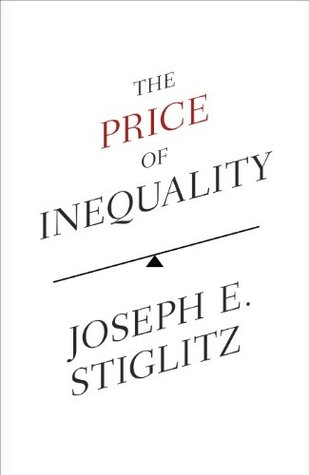More on this book
Community
Kindle Notes & Highlights
Unemployment—the inability of the market to generate jobs for so many citizens—is the worst failure of the market, the greatest source of inefficiency, and a major cause of inequality.
The problem, however, is not that globalization is bad or wrong but that governments are managing it so poorly—largely for the benefit of special interests.
If markets had actually delivered on the promises of improving the standards of living of most citizens, then all of the sins of corporations, all the seeming social injustices, the insults to our environment, the exploitation of the poor, might have
been forgiven. But to the young indignados and protestors elsewhere in the world, capitalism is failing to produce what was promised, but is delivering on what was not promised—inequality, pollution, unemployment, and, most important of all, the degradation of values to the point where everything is acceptable and no one is accountable.
The failures in politics and economics are related, and they reinforce each other. A political system that amplifies the voice of the wealthy provides ample opportunity for laws and regulations—and the administration of them—to be designed in ways that not only fail to protect the ordinary citizens against the wealthy but also further enrich the wealthy at the expense of the rest of society.
Given a political system that is so sensitive to moneyed interests, growing economic inequality leads to a growing imbalance of political power, a vicious nexus between politics and economics. And the two together shape, and are shaped by, societal forces—social mores and institutions—that help reinforce this growing inequality.
Part of the reason for this is that much of America’s inequality is the result of market distortions, with incentives directed not at creating new wealth but at taking it from others. It is thus not surprising that our growth has been stronger in periods in which inequality has been lower and in which we have been growing together.19 This was true not only in the decades after World War II but, even in more recent times, in the 1990s.
those with higher productivities earned higher incomes that reflected their greater contribution to society.
Economists have a name for these activities: they call them rent seeking, getting income not as a reward to creating wealth but by grabbing a larger share of the wealth that would otherwise have been produced without their effort. (We’ll give a fuller definition of the concept of rent seeking later in the chapter.) Those at the top have learned how to suck out money from the rest in ways that the rest
those governmental failures were no accident: the financial sector used its political muscle to make sure that the market failures were not corrected, and that the sector’s private rewards remained well in excess of their social contributions—one of the factors contributing to the bloated financial sector and to the high levels of inequality at
The term “rent” then was extended to include monopoly profits, or monopoly rents, the income that one receives simply from the control of a monopoly. Eventually the term was expanded still further to include the
Countries rich in natural resource are infamous for rent-seeking activities. It’s far easier to get rich in these countries by gaining access to resources at favorable terms than by producing wealth. This is often a negative-sum game, which is one of the reasons why, on average, such countries have grown more slowly than comparable
at below fair-market prices. It’s not hard to become wealthy if the government sells you for $500 million a mine that’s worth $1 billion.
resides in devising better ways of exploiting market power and other market imperfections—and, in many cases, finding better ways of ensuring that politics works for them rather than for society more generally.
We design rules for, say, selling government assets that are in effect partial giveaways, but less transparently so than what Russia did.)22 In the preceding chapter,
asymmetric information showed how information imperfections impaired competition, and new evidence substantiated the relevance
deployed a strategy known as FUD (fear, uncertainty, and doubt), creating anxiety about compatibility among users by programming error messages that would randomly appear if Netscape was installed on a Windows
Innovation lay elsewhere. This is consistent with theory and historical evidence: monopolists
Social capital is the glue that holds societies together. If individuals believe the economic and political system is unfair, the glue doesn’t work and societies don’t function well.
There is a simple reason for the failure of liberalization: when social returns and private rewards are misaligned, all economic activity gets distorted, including innovation. The innovation of the financial sector was directed not to improving the well-being of Americans but to improving the well-being of bankers. At least for a time, it succeeded in doing that; but it failed miserably in improving the plight of the ordinary American or even spurring growth in


